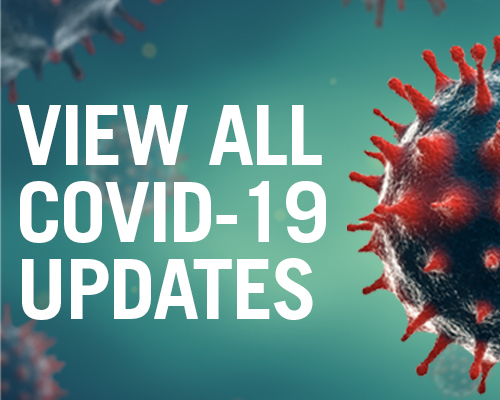More Teamwork, Coordination Could Boost CV Studies in COVID-19
A range of cardiovascular therapies have been tested in COVID-19, but small trial sizes and duplicate efforts are limiting progress.


“What we see right now is a very laudable and respectable effort, but probably not as coordinated as it could be,” lead author Anubodh S. Varshney, MD (Brigham and Women’s Hospital, Boston, MA), told TCTMD. “If we have several small trials of the same drug, which we saw here, it’s very possible that all of those would end up being neutral or positive in the wrong direction. And if we’d just done one large trial involving all of those same sites, those same investigators and drugs, we might have a much different sense of whether a drug is actually helpful in COVID-19.”
Since the earliest days of the pandemic, it’s been clear that preexisting cardiovascular disease and CV risk factors amplify COVID-19’s severity. Moreover, pathways active in cardiovascular disease—inflammation, thrombosis, endothelial dysfunction, myocardial dysfunction—have also been shown to play a role in the pathogenesis of COVID-19, so investigating therapies used in cardiac care makes sense, said Varshney. Going into this analysis, he’d anticipated the number of cardiovascular clinical trials in the setting of COVID-19 might actually be higher, he added.
For the current paper, which brought together a broad swath of cardiologists and institutions, the aim was to gauge the proportion of cardiovascular trials as well as get a snapshot of their size and rigor. Given the urgency of the problem posed by the global pandemic, COVID-19 has produced a surge of research and an unprecedented pace of scientific publication, but that’s led to questions about the quality of the science.
‘“The characteristics of ongoing trials evaluating CV therapies for treatment of COVID-19 are not well described and have implications for the clinical, investigative, and policy communities, as well as funding agencies,” the authors say.
They reported the results of their cross-sectional analysis in the American Heart Journal on October 26, 2020.
Surveying the Science
After excluding studies not focused on therapeutic interventions, the database search turned up a total of 1,645 studies related to COVID-19; in all, 114 looked at cardiovascular drugs or extracorporeal membrane oxygenation, reflecting 7% of the overall COVID-19 science listed. As Varshney et al report, antithrombotics were the most common focus of these studies (32.5%), followed by pulmonary vasodilators (14.0%), renin-angiotensin-aldosterone system-related therapies (12.3%), and colchicine (8.8%). Nearly one in 10 studies evaluated CV therapies in combination with other non-CV approaches, while 4.4% looked at more than one CV therapeutic category. Nearly 90% were randomized trials, but 87% enrolled fewer than 1,000 subjects and single sites dominated (55.3%). Mortality or a composite including mortality served as the primary endpoint in 56%, and the bulk of the studies were focused on hospitalized COVID-19 patients (81.6%).
If we’d just done one large trial involving all of those same sites, those same investigators and drugs, we might have a much different sense of whether a drug is actually helpful in COVID-19. Anubodh S. Varshney
At the time ClinicalTrials.gov was queried, on August 7, 2020, 28.9% of trials were still ongoing “and the majority were estimated to be completed after December 2020 (67.8%).” The lead location for the studies was North America for 44% of the trials, while 36% were in Europe, 8% in South America, and 9% in Asia, although the authors acknowledge that some studies—particularly those at international sites—may not have been registered online.
In retrospect, said Varshney, the low proportion of cardiovascular trials wasn’t shocking given that COVID-19 is primarily a pulmonary disease, and also that there are so many anti-infective, anti-inflammatory, and pulmonary therapies being investigated. “It kind of makes sense to a certain extent that the number of cardiovascular trials would be relatively low, but on the other side, the cardiovascular community is already known to conduct large-scale therapeutic trials, so it was a little surprising to me that the trials we did find were rather small in general and they were mostly single-center. Those findings really helped us understand that even though there is so much enthusiasm and effort being put into this throughout the world, including in cardiology, there doesn’t seem to be a lot of coordination amongst the cardiovascular drug evaluation,” he said.
He pointed to more-coordinated, multicenter efforts like the UK RECOVERY trial or the US National Institutes of Health ACTIV initiative: big-network, platform trials evaluating multiple agents. “We haven’t seen that replicated on the cardiovascular side,” he said. “Our hope would be that in quantifying and demonstrating the findings that we showed in this analysis, that we could motivate future trial designs [and] that in the cardiovascular community would include multicenter trials: trials that are large, that have findings that are generalizable and can really move the needle on improving patient outcomes.”
For example, he continued, 10 trials are being done on colchicine alone. “That’s a plausible drug that might have some benefit, but it would make sense to coordinate that interest, to make sure we are studying it together, rather than in our isolated silos,” Varshney advised, adding, “A more-global coordinated effort, both within the cardiovascular community and outside, could really streamline enrollment in trials, because everyone is competing for the same patient population.”
Supporting Research
In another finding, Varshney et al noted that 80% of the studies had academic sponsors, with just 7% being funded by industry, “undoubtedly related to the fact that these are studying generic medications,” he said. But he argued there is the potential for industry to play a more “creative role” in funding the trials that are so desperately needed, even if “blockbuster” investigational therapies are not the focus. For example, new diagnostic technologies, point-of-care diagnostic tests, new sensors, and monitoring technologies are all modalities that could be used in outpatient studies.
There’s also the allure of identifying patient cohorts for future therapies, he said. “We don’t know what the long-term ramifications of COVID-19 will be on the cardiovascular system, so having a base of patients you could then follow and potentially introduce therapies down the road could be useful” to industry sponsors, he said.
Shelley Wood was the Editor-in-Chief of TCTMD and the Editorial Director at the Cardiovascular Research Foundation (CRF) from October 2015…
Read Full BioSources
Varshney AS, Wang DE, Bhatt AS, et al. Characteristics of clinical trials evaluating cardiovascular therapies for coronavirus disease 2019 registered on ClinicalTrials.gov: a cross sectional analysis. Am Heart J. 2020;Epub ahead of print.
Disclosures
- Varshney reports receiving a postdoctoral training grant from the National Heart, Lung, and Blood Institute and serving on the advisory board for Broadview Ventures.


Comments